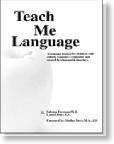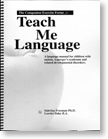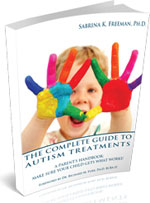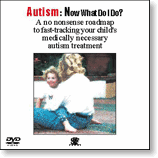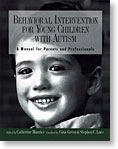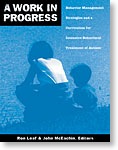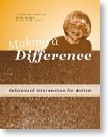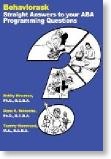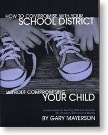Memo to Huffington Post: autism treatment is about kids, not parents
10/04/12 19:10 Filed in: autism | Asperger's Syndrome
In recognition of Autism Awareness month, the Huffington Post printed an article called 10 Things To Do After an Autism Diagnosis. The author -- Hannah Brown -- gives advice to parents on what they should do after the autism diagnosis bombshell is dropped on them. Although I applaud the helpful sentiment, ninety percent of the advice given by Brown was to parents about their own mental health and coping mechanisms and not about how to help their child.
To illustrate, although taking valium may help a parent cope, and making sure that one’s name is on all joint assets may be helpful in the event a spouse leaves the relationship, these things do nothing for the child. However, if the parent takes effective steps to improve their child’s situation, valium will be needed less and the marriage will likely be more harmonious. Life would be less stressful and something that together, as a team, the family unit can better withstand. Here are my “10 Things to Do After the Diagnosis”:
1) Find a parent group in your area that supports science-based treatment which is, currently, Early Intensive Behavioral Treatment (EIBI) based on the principles of Applied Behavior Analysis (ABA).
2) Join the Me-List on FACEBOOK and the Me-List on Yahoo. Both these groups are comprised of parents worldwide who have treatment teams up and running.
3) Find out if you live in a region where insurance companies are required to provide coverage for EIBI autism treatment. Find how parents in your region are funding their children’s treatment programs.
4) Source a list of Behavioral Consultants in your region with expertise in EIBI. If you don’t have any local expertise, here are a few national companies.
5) Phone the Behavioral Consultants you find and have them provide three references from parents who use their services. If they won’t give you references, go to the next consultant on your list. There is a certification board for this group of professionals and you can find them in your search, via zip code; however, make sure that their expertise is autism.
6) Once you hire the Behavioral Consultant, start recruiting for your treatment team.
7) Set up a training session for your team and start your program. The first couple of weeks are somewhat of a shock, but then you’ll get into a routine.
8) Start reading the right books. I have a list on the Autism Pundit bookshelf.
9) Sign-up for the Association for Science in Autism Treatment’s Newsletter and get savvy about how to differentiate science from quackery!
10) Breathe. If you follow the above steps, your child will reach his or her potential, and you have no idea how great that potential may be!
As a parent who has been in the autism universe for over two decades, I’m of the view that these steps are going to get you where you need to go. For now, ignore all the other noise out there. Your job is to get your child into a treatment program A.S.A.P. Nothing else will matter until your child has access to high quality treatment.
To illustrate, although taking valium may help a parent cope, and making sure that one’s name is on all joint assets may be helpful in the event a spouse leaves the relationship, these things do nothing for the child. However, if the parent takes effective steps to improve their child’s situation, valium will be needed less and the marriage will likely be more harmonious. Life would be less stressful and something that together, as a team, the family unit can better withstand. Here are my “10 Things to Do After the Diagnosis”:
1) Find a parent group in your area that supports science-based treatment which is, currently, Early Intensive Behavioral Treatment (EIBI) based on the principles of Applied Behavior Analysis (ABA).
2) Join the Me-List on FACEBOOK and the Me-List on Yahoo. Both these groups are comprised of parents worldwide who have treatment teams up and running.
3) Find out if you live in a region where insurance companies are required to provide coverage for EIBI autism treatment. Find how parents in your region are funding their children’s treatment programs.
4) Source a list of Behavioral Consultants in your region with expertise in EIBI. If you don’t have any local expertise, here are a few national companies.
5) Phone the Behavioral Consultants you find and have them provide three references from parents who use their services. If they won’t give you references, go to the next consultant on your list. There is a certification board for this group of professionals and you can find them in your search, via zip code; however, make sure that their expertise is autism.
6) Once you hire the Behavioral Consultant, start recruiting for your treatment team.
7) Set up a training session for your team and start your program. The first couple of weeks are somewhat of a shock, but then you’ll get into a routine.
8) Start reading the right books. I have a list on the Autism Pundit bookshelf.
9) Sign-up for the Association for Science in Autism Treatment’s Newsletter and get savvy about how to differentiate science from quackery!
10) Breathe. If you follow the above steps, your child will reach his or her potential, and you have no idea how great that potential may be!
As a parent who has been in the autism universe for over two decades, I’m of the view that these steps are going to get you where you need to go. For now, ignore all the other noise out there. Your job is to get your child into a treatment program A.S.A.P. Nothing else will matter until your child has access to high quality treatment.
It's a small, small world...
22/08/11 11:11 Filed in: autism | Asperger's Syndrome
For people with autism, it can be a small world... and that’s not necessarily a good thing. In order to avoid this fate for our children, it’s important to understand how it starts, and how we can fight it! Read more...


